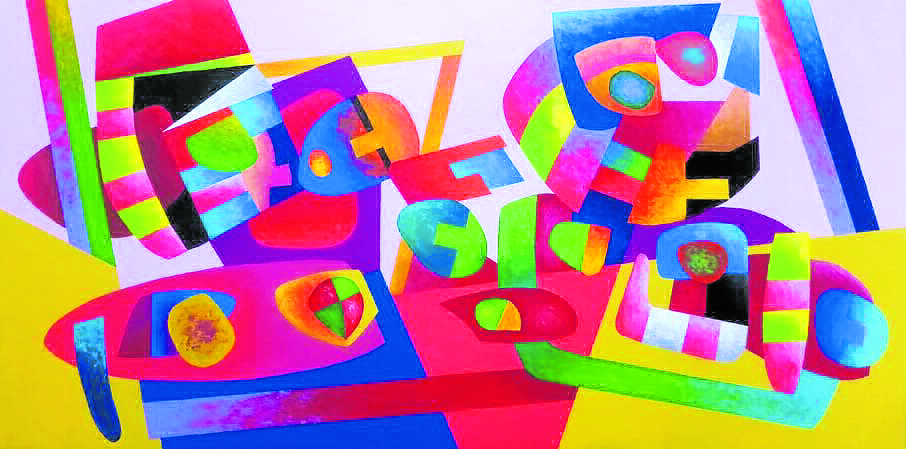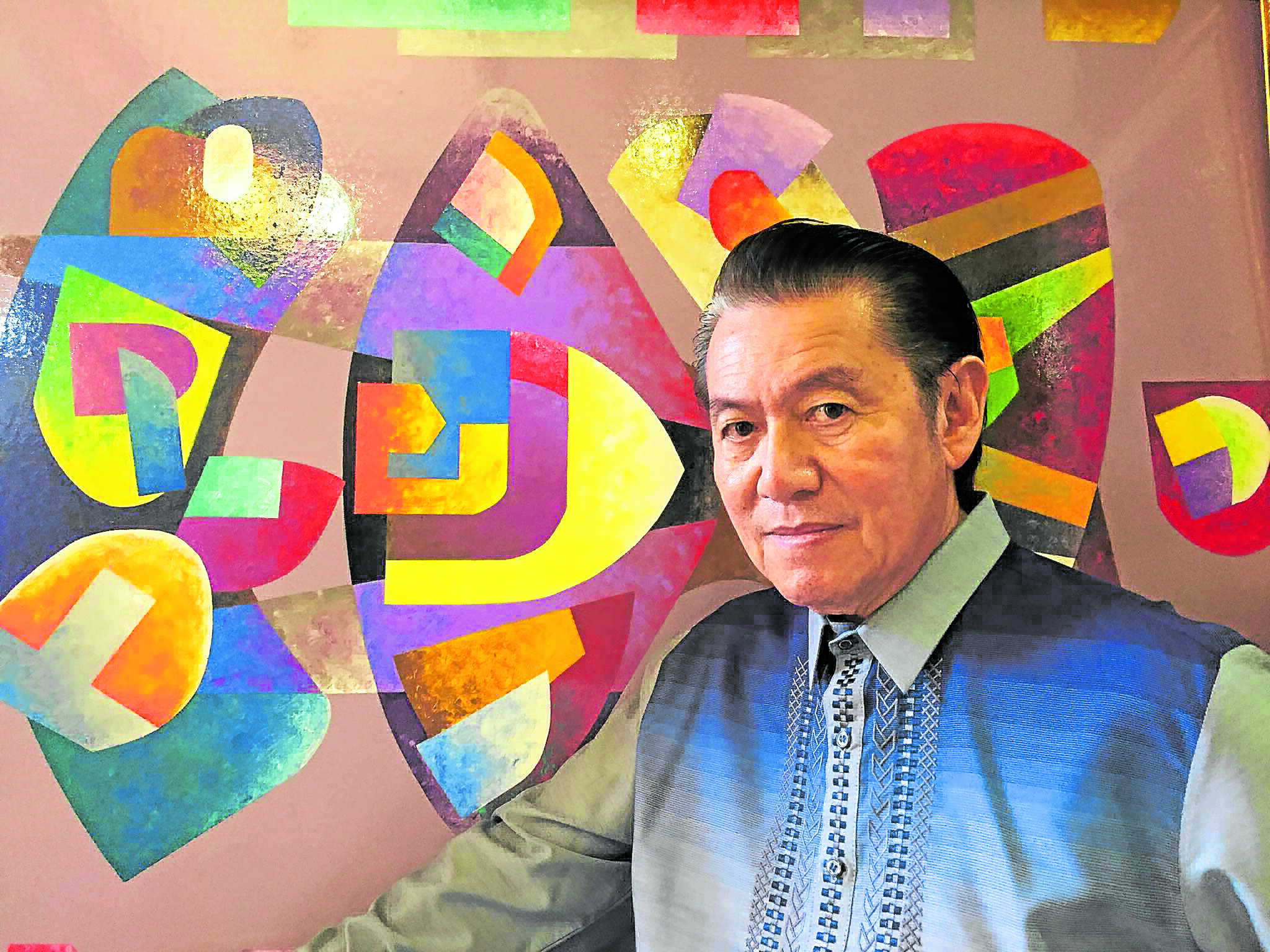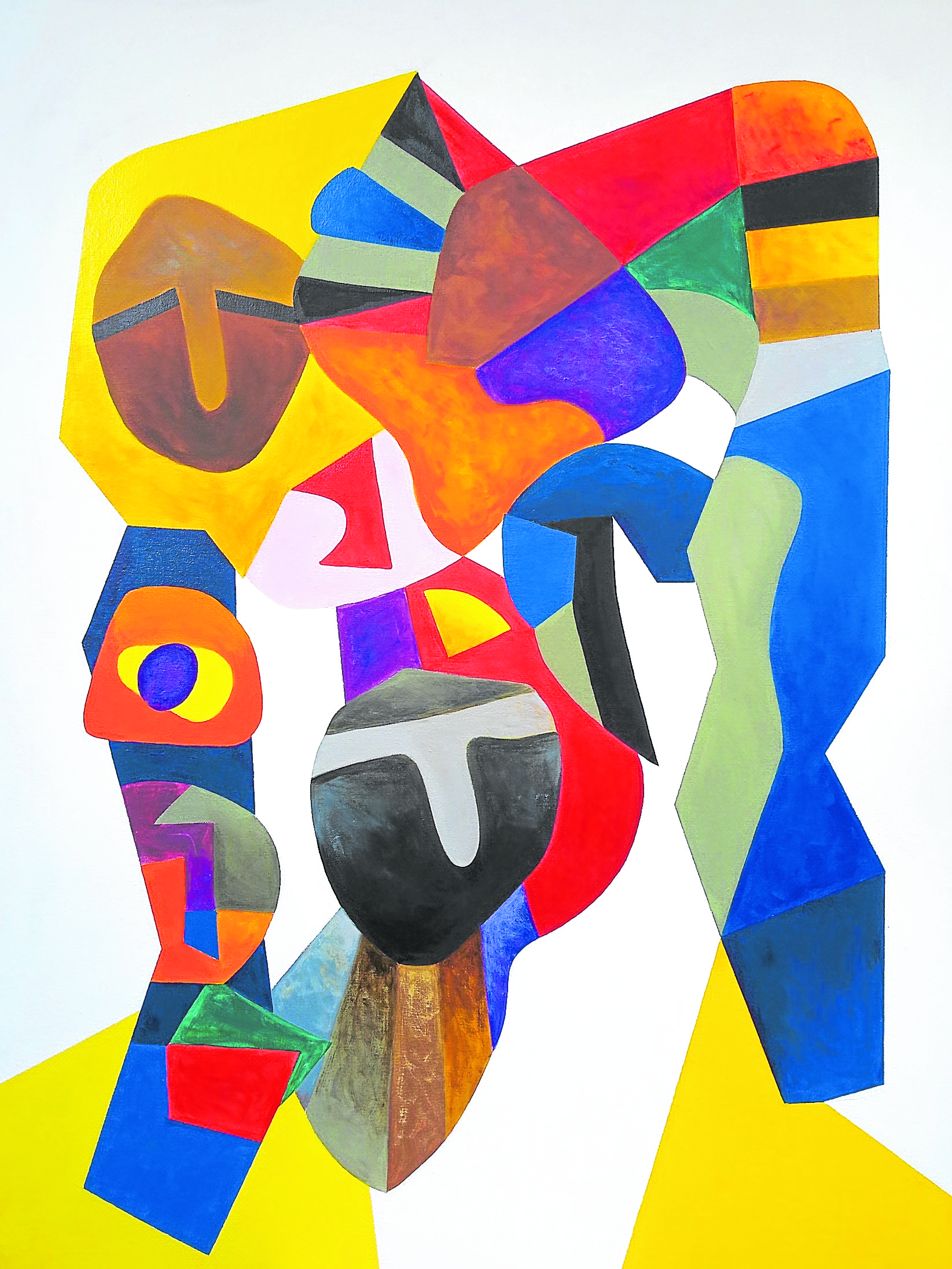It is always hard to crack the code of an artistic gesture. And the reasons may well be right there in the fix: that perhaps because art is essentially a gesture and so is only a hint of something sheer; or that because it is actually not a code, or at least not solely a fully formed meaning but a “rustle of language.”
It becomes more difficult if the work of art is deemed “abstract” either as a stylistic language or as a philosophical proposition. However way it is grasped, the abstract never fails to slip away from the habits of our “ways of seeing.” In fact, it is these ways of seeing that the abstract tries to trouble or complicate, and finally refuse to merely absorb in what it is we think or feel we see.
The process presents another level of challenge if the artist is conversant in how his métier plays out, aware of the work that goes into the art and its unpredictable disclosures. Cid Reyes is one such figure who began to do art and write criticism almost at the same time in the late ’60s and the early ’70s. To look into his practice, therefore, is to plot out the paths that he had taken both as a maker of art and an interpreter of its many maladies.

Reyes’ first exhibition was in 1969 at Print Gallery presided over by the artist Joy Dayrit. This was followed by another one a year later, at F. Sionil Jose’s Solidaridad Galleries, and in 1972 at Hyatt Hotel right before he left for Italy for a study grant at Accademia di Belli Arti in Rome.
He went to London after his studies in Rome; and while taking up courses in art history, he had an exhibition in 1976 at Art Associates Gallery, where the poet and critic Emmanuel Torres served as a consultant. He titled it “Paintings and Collages from London” and prepared some notes for it. This text, alongside his critical essay on Arturo Luz in 1973, may well form the foundation of his thick corpus in art criticism, which has been rare in these parts.
In his own exhibition in 1976, the same year he had a project with Jun Terra and David Medalla at the fabled Artists for Democracy in London, Reyes explained that the works were built around “serial imagery” and that he was “reworking” the paintings of Mondrian by “substituting shrill neonlight colors for the usual limited hues. There is also a series of paintings using checkerboard as visual motif. Still, in another series, I have deployed tiers of stripes, not unlike those in a musical scale, by arranging them in sequence suggestive of crescendo, diminuendo; point, counterpoint.”

Artist in conversation
We discern here an artist who is in conversation with a lively humanities and art history when he makes decisions about the form of his art and its sanguine explication to an interested public. His long seasons in the practice of art writing leave a trail of essays, reviews, monographs, interviews and books on National Artists and emerging talents alike, being the most prolific critic, along with the esteemed Alice Guillermo, of his time. The nearly quotidian task of annotating art in exhibitions was part journalism, part philosophy, and the occasional poetry.
In recent years, he has made the time to return to his passion to paint. And like in his early paintings, which stemmed from studies via collage, he would revisit the felicitous densities of layers and configurations. He reveals that his “geometric works start with sketches… Then they are transferred on the large canvas with color specifications. Seemingly simple process but terribly laborious.”
Finally, we take note of Reyes’ affection for music to which all art aspires according to the writer Walter Pater. The disparate elements of the composition, hewn from the principles of collage and rearticulated as drawing by way of sketches, come together under the sign of the Baroque or jazz through counterpoint or improvisation.
There is also the nuance of whimsy and lyricism that inflects, or better still, syncopates the hard edge. And, in the same vein, color and sheen derive from the quest for fastidiousness, a function of structure and not just of ornament, a veneer that attracts and assimilates.

Taking in Reyes’ paintings, we are reminded surely of the great Filipino painter Hernando R. Ocampo who was a stalwart of many sympathies. Poet, writer and intellectual, his horizon was extensive. Some of his paintings were references or maybe even paeans to music.
And if Ocampo had tempo rubato, Reyes has his tango and rhumba as well as his evocations of folksy festivity marked by the burst of an ebullient chromatic climate alternating with subtle gradations. The congealing but also discrete units in this visual equation intervolve as if in an elastic mesh or a dynamic ecology, or as the title of the exhibition implies, a choreography, the push and pull, the congruence and asymmetry of a “geometry in motion.”
It is this underlying archive of music and collage that initiates us into the deep structure of Reyes’ rhythmic abstraction. It is indebted to the search of a syntax shorn of convenient recognitions and, time and again, marvels at the epiphanies of a sonic, gyrating universe that vibrates in the intriguing interval of silence and resonance. —CONTRIBUTED

Patrick Flores is curator of the Jorge Vargas Museum at the University of the Philippines and adjunct curator at the National Museum Singapore. In 2015, he was curator of “Tie A String Around the World,” which marked the return of the Philippine Pavilion in the 56th Venice Biennale, following a 51-year absence. He is Art Studies professor at UP.
“Rhumba: Geometry in Motion” runs until Nov. 30. Visit www.galeryaamalia.com; follow @galeryaamalia on Facebook and Instagram.












































